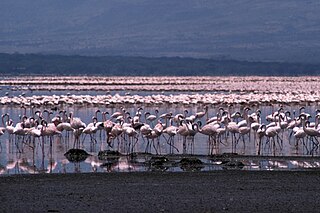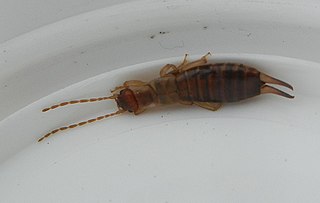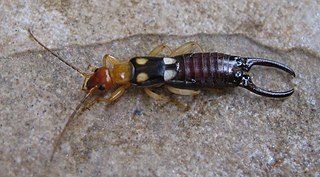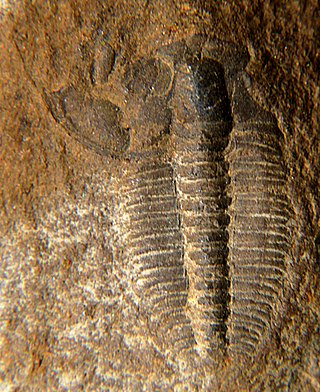
The rotifers, commonly called wheel animals or wheel animalcules, make up a phylum of microscopic and near-microscopic pseudocoelomate animals.

Forficula auricularia, the common earwig or European earwig, is an omnivorous insect in the family Forficulidae. The European earwig survives in a variety of environments and is a common household insect in North America. The name earwig comes from the appearance of the hindwings, which are unique and distinctive among insects, and resemble a human ear when unfolded; the species name of the common earwig, auricularia, is a specific reference to this feature. They are considered a household pest because of their tendency to invade crevices in homes and consume pantry foods, and may act either as a pest or as a beneficial species depending on the circumstances.

Lake Bogoria is a saline, alkaline lake that lies in a volcanic region in a half-graben basin south of Lake Baringo, Kenya, a little north of the equator. Lake Bogoria, like Lake Nakuru, Lake Elementeita, and Lake Magadi further south in the Rift Valley, and Lake Logipi to the north, is home at times to one of the world's largest populations of lesser flamingos. The lake is a Ramsar site and Lake Bogoria National Reserve has been a protected National Reserve since November 29, 1973. Lake Bogoria is shallow, and is about 34 km long by 3.5 km wide, with a drainage basin of 700 km2. It is Located in Baringo County.

Forficulidae is a family of earwigs in the order Dermaptera. There are more than 70 genera and 490 described species in Forficulidae.

Brachionus is a genus of planktonic rotifers occurring in freshwater, alkaline and brackish water.
Forficula apennina is a species of earwig in the family Forficulidae.

Forficula decipiens is a species of earwig.
Forficula iberica is a species of earwig in the family Forficulidae.

Forficula lesnei, or Lesne's earwig, is a species of earwig from Europe, particularly Britain. Compared to the common earwig, Lesne's earwig is shorter, with a body length around 8 mm (0.31 in). It also lacks hind wings. It can be found dwelling on the shrub Clematis vitalba.
Forficula mikado is a species of earwig in the family Forficulidae. They are found in the Palearctic realm, particularly in Japan.

Forficula smyrnensis is a species of earwig in the family Forficulidae. It is mostly found in the Palearctic realm.

Forficula is a genus of earwigs in the family Forficulidae. The best known species is Forficula auricularia.

Brachionus plicatilis is a euryhaline rotifer in the family Brachionidae, and is possibly the only commercially important rotifer, being raised in the aquaculture industry as food for fish larvae. It has a broad distribution in salt lakes around the world and has become a model system for studies in ecology and evolution.

Labia minor, the lesser earwig or small earwig, is a species of earwig. It is widespread globally in temperate climates, preferring warm locations such as compost heaps in parts of its range. It is 4–7 mm long, including the pincer, and chocolate brown in color.

Brachionus calyciflorus is a planktonic rotifer species occurring in freshwater. It is commonly used as a model organism in toxicology, ecology and evolutionary biology.
Its advantages include the small size and short generation time.

Olenus is a genus of Upper Cambrian ptychopariid trilobite.
Brachionus nilsoni is a euryhaline rotifer in the family Brachionidae. The species is distinguishable from all brachionids by lacking posterior spines, by the shape of the foot apertures and the posterior portion of its lorica, and the long thin occipital spines. It is named after Börje Carlin-Nilsson.

Dichagyris renigera is a moth of the family Noctuidae. It is found in South- and Southeast-Europe, Armenia, Caucasus and Turkey.

Lestes forficula, the rainpool spreadwing, is a species of spreadwing in the damselfly family Lestidae. It is found in the Caribbean Sea, Central America, North America, and South America.












